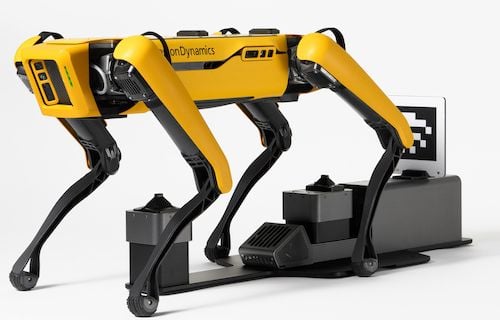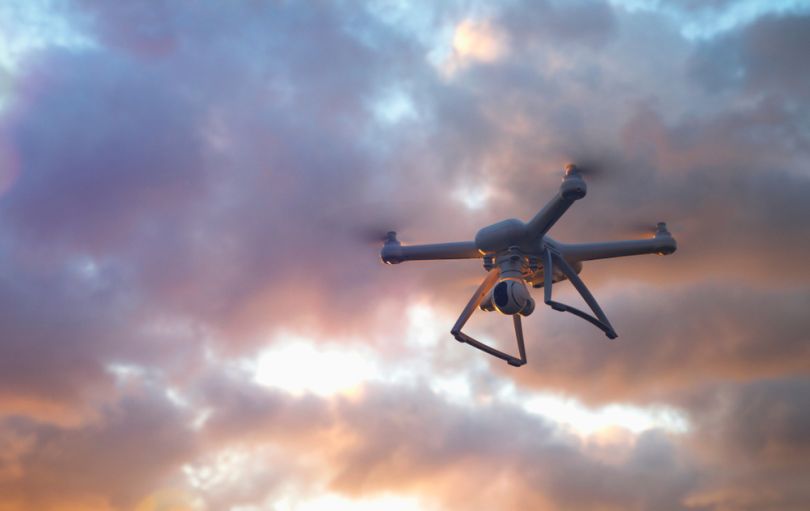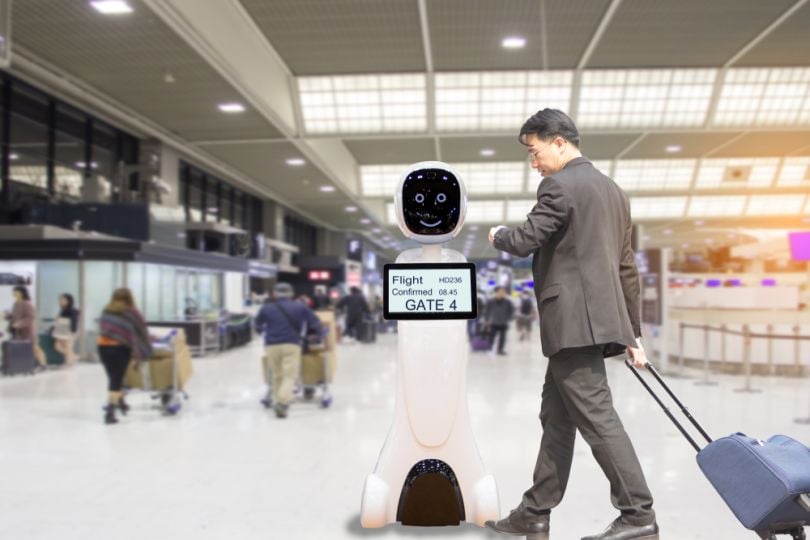
Image: Shutterstock / Built In
Robots are entering the workplace at an unprecedented rate. An estimated 3 million industrial robots are at work across the globe, according to data from the 2021 World Robotics report.
Robots, like technology, are rapidly changing the way jobs are executed, requiring a different knowledge base from yesterday’s labor force. This is true at all levels of career training and professional development, and it is why our institution, Warren County Community College, has developed a robotics and drone training program that accepts up to 40 new students each year.
What Is a Robot?
The discipline crosses with robotic programming and maintenance and prepares students for careers in fields such as unmanned system operations, robotic maintenance and robotic programming, as well as the design, development and construction of autonomous robots. The program also covers criminal justice, business and entrepreneurship, which increasingly are relying on robots and drones to execute their respective disciplines or to fulfill their missions.
Among the robots the school deploys for a number of applications is Spot, Boston Dynamics’ versatile mobile robot. This now-iconic quadruped has proven to be an eye-catching recruitment tool as it offers student operators a uniquely engaging training experience. The college partners with several local organizations that deploy, and will continue to add, robotic technology to their fleet of products into the foreseeable future.
Interacting with a robot is a transformative experience, one that drastically impacts the career trajectories of students. Many enroll in the program having never interacted with an industrial robot, only to quickly fall in love with the technology and devote their career plans to working alongside robots.
More Reading About RobotsRobotics: What Are Robots?
Working With Robots Is Fun
Spot, for example, is easy to operate. It is controlled via a tablet, which operates like a video game controller, and that ease of use makes deploying the robot both fun and accessible, creating interest in students where perhaps there wouldn’t have been any. The intimidation that can come with advanced technology quickly fades and students build confidence to regularly work with the robot.
Having the opportunity to work hands-on with a robot has the added benefits of being a great motivational tool that excites students who may have otherwise been cooped up in a classroom while preparing them for what it could be like working with this technology out in the field post-graduation.
On one outing, we tested Spot’s ability to autonomously enter a closed room to perform an electrical inspection for the college’s course in thermography. Students performed a visual inspection of a high-voltage electrical room from a remote location and were responsible for identifying areas that would need further inspection using infrared technology. This exercise informed students on the need for safe operations in high-voltage non-contact inspections.
Working With Robots Is Challenging
Robots are composed of a number of moving parts. Those with a proclivity for tinkering with machinery are particularly drawn to the hardware aspect of the field — taking things apart, stripping them to their bare bones and then rebuilding the machinery from the ground up.
At WCCC, we understand that robots are only as effective as their functionality, which requires maintenance and sometimes modification. This aspect of robotic training has proved a welcome challenge to students.

One of our most challenging courses focuses on mechatronics, which is the mechanics and electronics applied in everything from drones and robots to advanced automated manufacturing. In one assignment, students used Spot to determine the full capacity of advanced robotic systems, then designed and programmed a ground-based robot using simultaneous localization and mapping (SLAM), while focusing on performance in relation to the best ground robot currently in existence.
In this class they’re forced to troubleshoot and overcome obstacles in real time by understanding the robot’s parameters and collaborating not just with each other, but with the technology. They’re learning that each part of a robot’s hardware plays an important role in its overall performance.
Understanding these new parts, and what they’re responsible for, is often uncharted territory, but ultimately a process that inspires admiration for the technology.
More Reading About Robots35 Robotics Companies on the Forefront of Innovation
Working With Robots Is Inspiring
Technology continues to transform how jobs are executed. Exploring new ways of performing a task with a robot has allowed students to tap into their inventiveness and imagination. Once introduced to the technology, we encourage students to propose opportunities to deploy Spot.
Some of these applications have ranged from capturing data to building digital twins for monitoring build progress, to inspecting environments and removing personnel from hazardous positions. In one partnership in particular, students used Spot to monitor the construction progress for the Dr. Joseph Warren Robotics Research Center, which opened in the fall of 2022.
With Spot and other thermal-tracking lessons, students were able to ensure the best construction outcomes in their future learning center, something our students had never been able to do before. This application came about because of the realization that construction monitoring could save time and expense, so students used advanced robotic systems to help autonomously monitor progress and report issues, saving the college significant funds related to construction change orders.
Whether monitoring algae blooms in lakes and waterways for the local community, collecting rooftop remote sensing data for some of New Jersey’s essential transportation hubs for the state or using a robot like Spot to inspire the imagination of the next generation of the workforce, there is no substitute for students out in the field working hands-on with this technology, conducting real world research, identifying and solving problems.
As I often note, Spot, in many ways, illustrated the possible. Now we continue to learn from the possibilities this technology presents to envision the next generation of robotic potential and prepare our students for the future of work.
If the website content violates your rights, please contact us to delete it。








